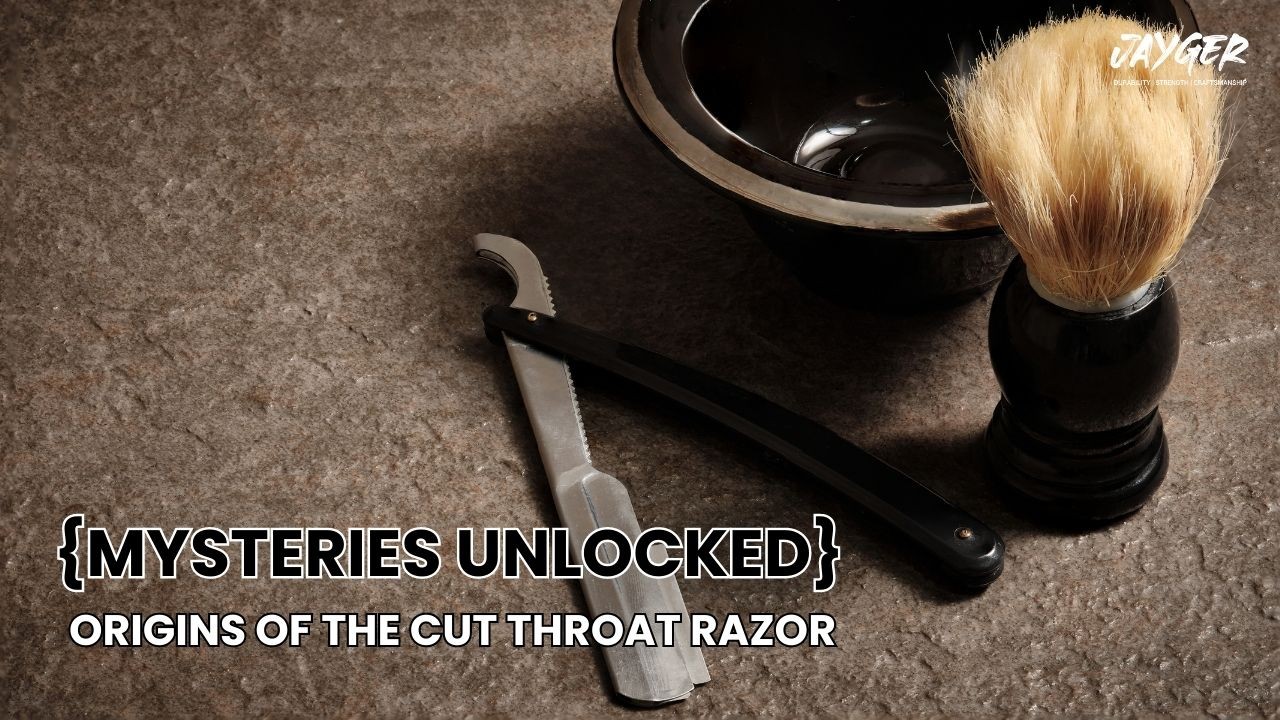Blog
{Mysteries Unlocked}: Origins of the Straight Razor

For centuries, the straight razors or cut throat razors has been a symbol of masculinity and a tool of the trade for barbers worldwide. But have you ever wondered about the origins of this iconic blade? Where did it come from, and who invented it? The history of the straight razor is shrouded in mystery, with many different theories and legends surrounding its creation. Some say the ancient Egyptians first used it, while others believe the Romans popularized it.
Whatever the truth, one thing is for sure: the straight razor has come a long way since its humble beginnings. In this article, we will delve deep into the history of the straight razor and uncover some of the fascinating mysteries surrounding its origins. So grab your shaving cream and strap in for a journey through time and tradition as we explore the mystique of the straight razor.
Historical Background of the Straight Razor
The history of the straight razor dates back to ancient times. It is believed that the ancient Egyptians used the first straight razors as early as 3000 BC. These early razors were made from copper and had a single straight edge. They were used by both men and women for various purposes, including hair removal and grooming.
The straight razor was also popular among the ancient Greeks and Romans. The Romans, in particular, are credited with popularizing the straight razor use in Europe. They used the razor to shave their faces and heads, and it quickly became a symbol of masculinity and status.
During the Middle Ages, the use of the straight razor declined as beards and facial hair became fashionable. However, it came back in the 18th century when beards fell out of fashion. The straight razor became a staple tool for barbers until the early 20th century when safety razors were introduced.

The Evolution of the Straight Razor
The design of the straight razor blade has evolved over the years. The earliest razors were made from copper but were soon replaced by steel. The first steel razors were made in Sheffield, England, in the early 18th century. These razors were made by hand and were expensive, so they were primarily used by the wealthy.
In the mid-19th century, the process of manufacturing straight razors was revolutionized with the introduction of the hollow grinding technique. This technique made producing thinner and sharper blades possible and reduced the razor’s weight.
By the early 20th century, straight razors were being mass-produced using machines. This made them more affordable and accessible to the general public. However, the straight razor’s popularity declined with the safety razor’s introduction, which was safer and more convenient to use.
Despite declining popularity, the straight razor has remained a beloved tool among barbers and shaving enthusiasts. Many people still prefer a straight razor shave’s traditional feel and quality.
What Materials Were Used to Craft Early Straight Razors?
The earliest straight razors were made from copper, readily available and easy to work with. However, copper is not durable, and the razors were prone to rust and corrosion.
Damascus Steel replaced copper as the material of choice for straight razors in the 18th century. The steel used for razors had to be of high quality and have a high carbon content to ensure it could hold a sharp edge. The steel was also tempered to make it more durable and rust-resistant.
In the 19th century, stainless steel became more common for straight razors. Stainless steel was more resistant to rust and corrosion than carbon steel, making it a popular choice for razors.
How Were Straight Razors Manufactured in the Past?
In the past, straight razors were primarily made by hand. Making a razor involved heating and shaping the steel, grinding the blade to the desired thickness, and then honing the blade to a sharp edge.
The grinding process was particularly important, as it determined the thickness and sharpness of the blade. Early razors were ground on a stone wheel powered by a foot pedal or water wheel. Later, mechanized grinders were developed, which made the process faster and more efficient.
The final step in the manufacturing process was honing the blade. This involved sharpening the blade by rubbing it against a honing stone. Honing was a skilled and time-consuming process that required a steady hand and a good eye.
Today, most straight razors are mass-produced using machines. However, a few artisans still make razors by hand using traditional methods.
What Were the Different Styles and Designs of Straight Razors?
Over the years, there have been many different styles and designs of straight razors. The most common style is the “singing” or “hollow” grind, characterized by a concave blade. This design makes the razor lighter and easier to handle.
Another popular style is the “square point” razor, which has a square tip. This design is favoured by barbers for its precision and control. The “round point” razor has a rounded tip and is favoured by those who prefer a gentler shave.
Straight razors also come in various sizes, from small “travel” razors to large “barber” razors. The size of the razor is mostly a matter of personal preference, although barbers generally prefer larger razors.
What Cultural Significance Did Straight Razors Have in History?
The straight razor has had a significant cultural impact throughout history. In ancient times, it was a symbol of wealth and status. More recently, it has been a symbol of masculinity and a rite of passage for young men.
The japanese razors also played a role in popular culture. It was featured in the classic barbershop quartet song “Sweet Adeline” and was a staple prop in early Hollywood films. It was also a common weapon in gangster movies, where it was often referred to as a “cut-throat” razor.
Today, the straight razor has become a symbol of tradition and craftsmanship. Many barbers and shaving enthusiasts prefer the quality and feel of a straight razor shave over modern shaving methods.
Why Are Straight Razors Also Famous as Cut Throat Razors?
The term “cut throat” razor is often used synonymously with straight razor. This term originated from the belief that the razor was so sharp it could easily cut a person’s throat. However, this is a misnomer, as the razor is only dangerous if used improperly.
The term “cut-throat” also has a negative connotation, contributing to the decline in popularity of the straight razor. Today, many people prefer the term “straight razor” or “open razor” to avoid the negative connotations associated with the term “cut-throat.”
Straight Razor Maintenance and Care Tips
Proper maintenance and care are essential to ensure your straight razor lasts long and performs at its best. Here are some tips for maintaining and caring for your straight razor:
– After each use, rinse the razor with warm water and dry it thoroughly.
– Store the razor in a dry, cool place to prevent rust and corrosion.
– Sharpen the razor regularly using leather strops for sharpening.
– Oil the razor periodically to prevent rust and keep the blade lubricated.
– Be careful when handling the razor to avoid dropping or damaging it.
In conclusion, the straight razor has a rich and fascinating history that spans thousands of years. From its humble beginnings in ancient Egypt to its modern-day status as a symbol of tradition and craftsmanship, the straight razor has stood the test of time. Whether you are a barber or a shaving enthusiast, the allure and mystique of this iconic blade are not denied. So next time you pick up your straight razor, take a moment to appreciate the history and craftsmanship that went into its creation.
